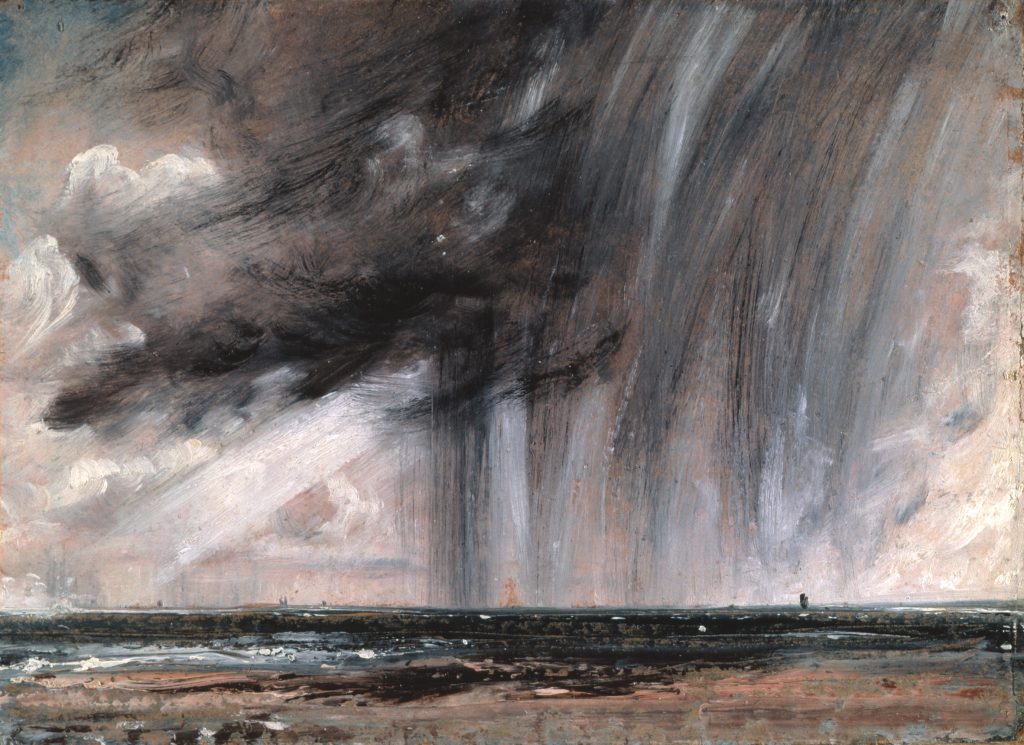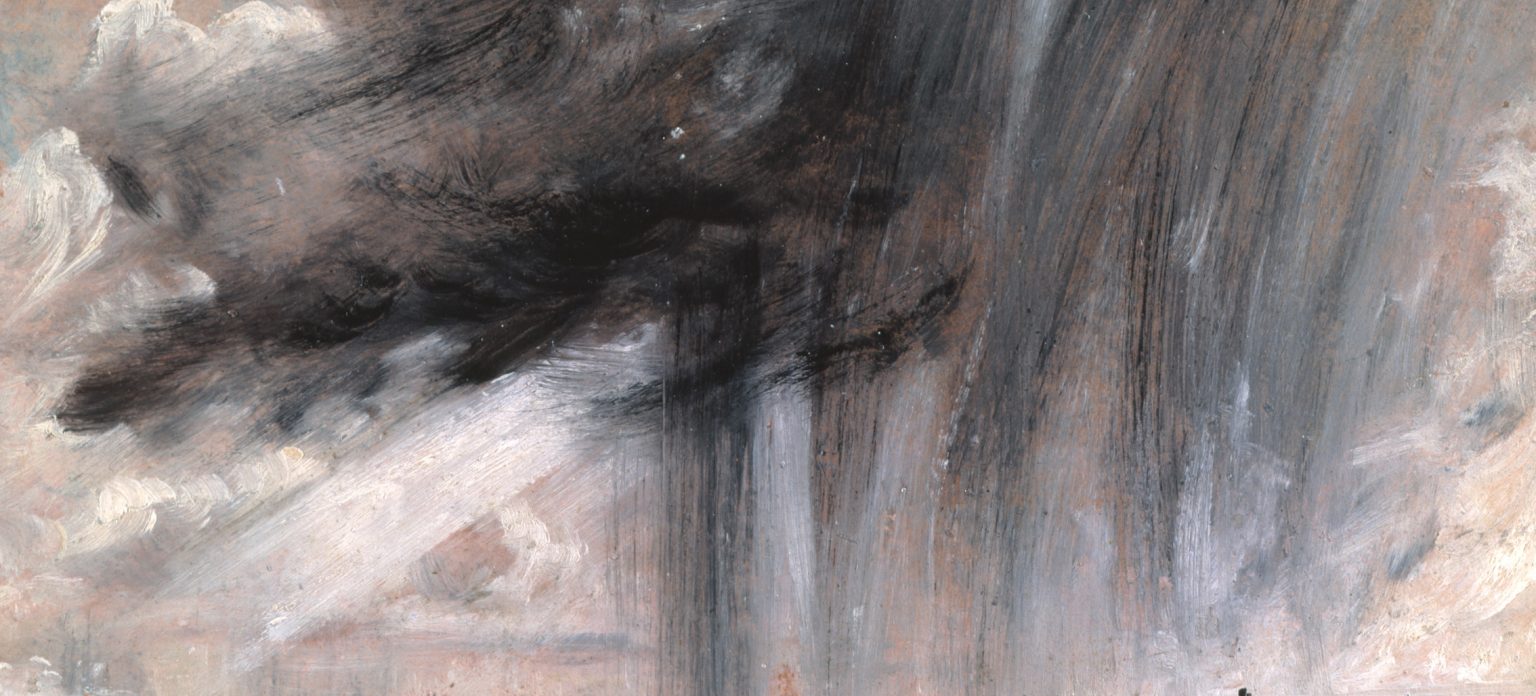Professor Henri Fuseli, who taught John Constable at the Royal Academy for some time, half-jokingly said this landscape artist’s works make him call for his great coat and umbrella.
Constable loved English nature as it is, he never tried to embellish it. He generally preferred the truth of life to the decorative picturesque.
That Moment When the Heavens Opened
Between 1824 and 1828, John Constable often visited Brighton: the artist took lodgings for his family there, because his wife, suffering from tuberculosis, benefited from the sea air.
Constable didn’t like living at the noisy, fashionable resort very much. He wrote in a letter to his patron, John Fisher, in 1824 (1):
In short, there is nothing here for the painter but the breakers – and the sky – which have been lovely indeed and always varying.
The artist spent many hours sitting on the beach and painting the sea. Look at one of his sketches created in Brighton:

We can easily imagine how Constable worked on it. At first, he determined where the sky meets the sea, then applied a gentle pinkish color to the area of the sky. Having found the appropriate colors for the water, he began to depict the waves.
While the artist was carefully painting the white foam and tiny sailing boats with the tip of his brush, the sun disappeared behind heavy clouds – if it is a windy day, the weather near the sea changes quickly. He darkened the sea, marked the dark cloud…
There was unbearable tension in the air. The artist was painting faster and faster. The timid last gleam of sunlight broke through; Constable managed to catch it. Finally, he overtook time: on his little piece of paper, the heavens opened up a couple of minutes earlier than in the real world. The torrential rain poured down with strong rapid brushstrokes.
The Most Factual of All Artists
Is Seascape Study with Rain Cloud realistic? No, it isn’t. I doubt somebody would mistake it for a photo or a picture from a geography textbook. Is this sketch truthful? Certainly. Instead of simply copying the lines and colors, Constable conveyed the unique sense of the particular moment.
The effect, that the painter achieved, is even more impressive if you compare his works to the works of his contemporaries. John Constable was a painter of the Georgian era; during that period, nobody had heard of such things as impressionism or expressionism yet. Painters, including Constable himself, relied on the old masters’ creative methods.
What made him different was his striving for the meticulous, almost pedantic portrayal of nature; he perhaps was, as the art critic Jonathan Jones noted, “the most factual of all artists” (2).
Constable looked at nature with his own eyes. When this artist saw that an academic painting principle wasn’t working, he could temporarily forget it.
Making his sketches, John Constable was especially bold: he did not intend to exhibit them; they were just a kind of professional training or the material for other, ‘finished’ canvases.
Now, in the 21st century, they are a priceless part of his legacy.
- John Constable’s Correspondence VI, The Fishers Vol VI – R.B. Beckett, ed., Ipswich, Suffolk, 1968
- Sensations: The Story of British Art from Hogarth to Banksy – Jonathan Jones, Laurence King Publishing, 2019
- John Constable’s Rainstorm Over the Sea: the landscape of a troubled mind – Skye Sherwin, The Guardian, 28 Apr 2017

